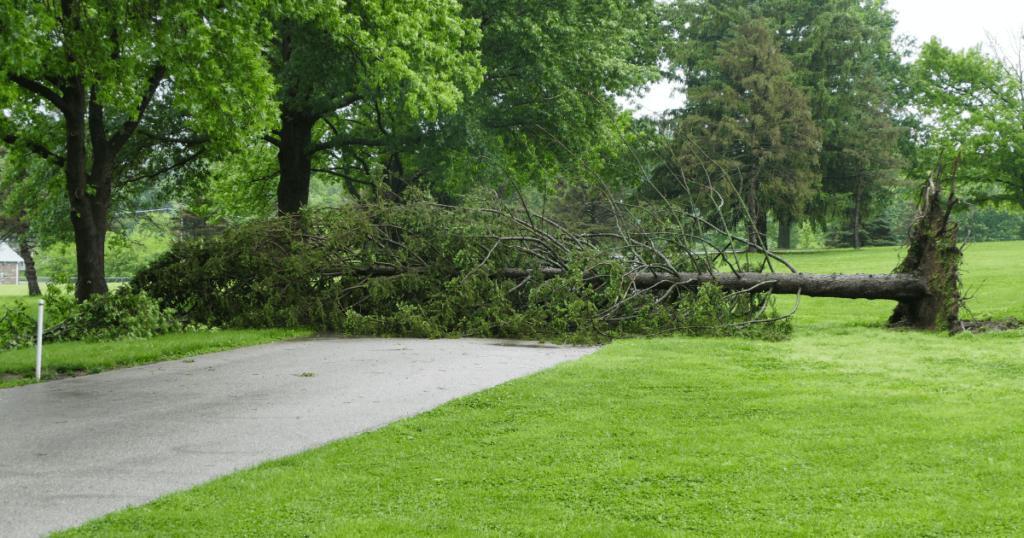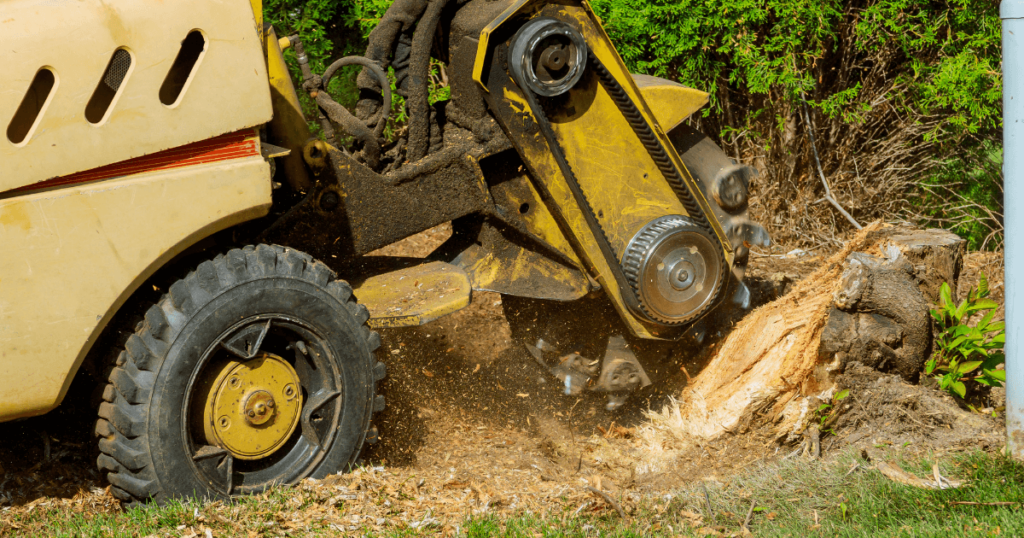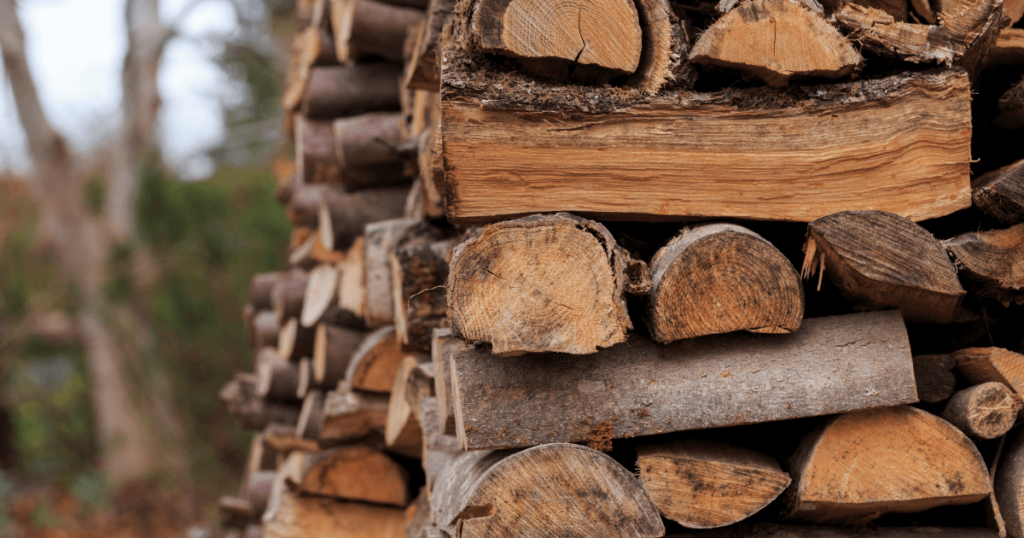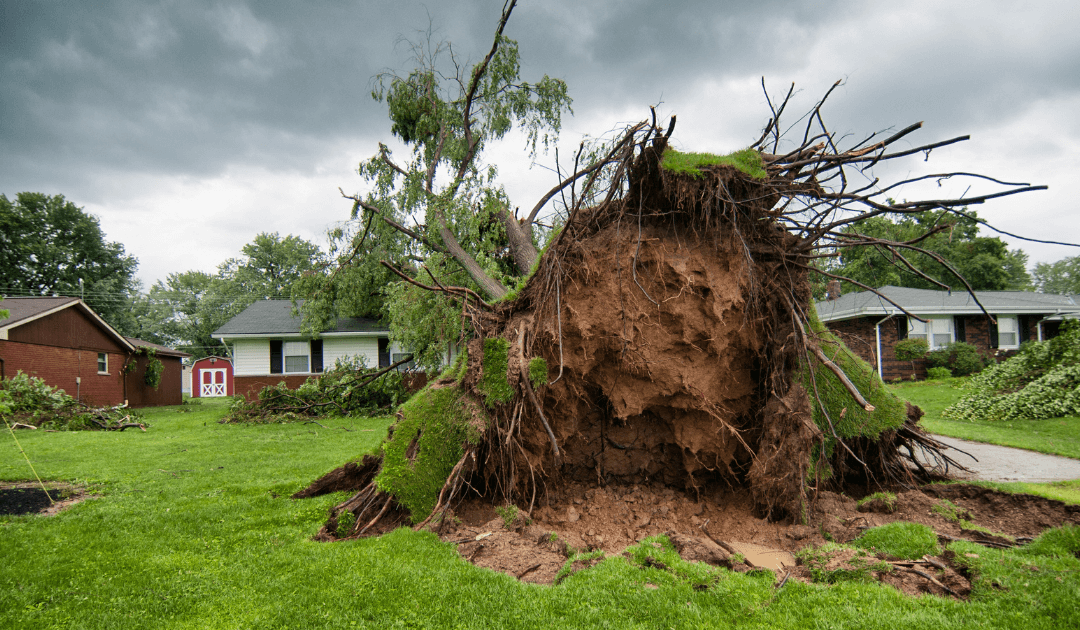Having a tree fall in your yard can be a jarring experience. We’ve all enjoyed the shade of a large tree on a hot summer day. Maybe your kids even had a treehouse in it. But when that same tree comes crashing down, it can feel like an overwhelming problem to tackle. Not to fear, though, because this guide offers valuable insights on what to do when a tree falls in your yard, aiming to ease your worries and provide practical solutions. So, stay with us, and let’s get started.
Ensure Personal Safety
When a tree falls in your yard, the first and foremost priority is to ensure personal safety. Assess the situation carefully and take necessary precautions. If the tree has knocked down power lines, it is crucial to avoid approaching it due to the significant risk it poses. In such cases, promptly contact emergency services for immediate assistance.
Additionally, if the tree falls as a result of natural causes like a storm, it is important to remain vigilant for other trees nearby that may also be at risk of falling. Stay alert and prioritize safety in all circumstances.
Assess the Situation
Next, take a moment to calmly assess the situation. Look closely at the fallen tree and carefully evaluate any potential damage it may have caused. Is it obstructing access, making it difficult to enter or exit your property?
Has it caused any significant damage to your house or your neighbor’s property, such as broken windows or structural issues? It’s crucial to note these specific details, as they will be vital when you eventually contact your insurance company for assistance.
Contact Authorities
Once you have carefully assessed the situation and ensured your personal safety, it’s time to take the necessary steps and contact the appropriate authorities. In the event that the fallen tree has caused damage to power lines, it is crucial to promptly call your local electricity provider to report the incident. This will allow them to address the issue swiftly and restore power as quickly as possible.
However, if the fallen tree poses no immediate danger but obstructs a road or sidewalk, it is recommended to notify your local police department. They will be able to assist in coordinating the removal of the tree and ensure the safety and convenience of the community. By taking these actions, you are not only prioritizing your own safety but also contributing to the overall well-being of your neighborhood.
Emergency Services and Evacuation
If you come across a fallen tree that poses an immediate danger, such as being tangled in power lines, it is crucial to take action. In these situations, it is advisable to contact emergency services promptly. Their specialized equipment and training enable them to handle such scenarios safely and efficiently, ensuring the well-being of everyone involved.
Keep in mind that in extreme cases where the risk is high, an evacuation may be necessary to ensure the safety and security of the surrounding area.

Identifying the Tree and Damage
Identifying the fallen tree and assessing the potential damage is very important. You need to determine if the tree was healthy or dying before it fell. Look at the structure of the tree, its branches, and leaves to get clues about its health.
If the fallen tree is from your neighbor’s property, it might complicate matters. In such cases, knowing who the owner is becomes crucial.
Documenting the Incident: Importance of Photos and Notes
Take photos of the fallen tree, the damage it caused, and any other relevant elements. This includes close-ups of where the tree fell, the surrounding area, and any damage to your property or your neighbor’s property.
Also, make notes about the incident. Write down when the tree fell, what the weather was like, and any other significant details. These notes and photos will serve as proof when you contact your insurance company. They are also useful if there’s a dispute about who the tree owner is or who should be liable.
Contacting Your Homeowner’s Insurance: What You Need to Know
When contacting your homeowner’s insurance, keep these points in mind:
- Inform them about the incident as soon as possible.
- Share the photos and notes you made.
- Discuss the coverage for fallen trees and tree removal costs.
- Ask whether the insurance covers repair costs for any damage caused by the tree.
- Understand if your policy covers debris removal after a storm.
- Inquire if the insurance company requires a certified arborist’s report.
- If a neighbor’s healthy tree falls in your yard, ask about your policy regarding this situation.
It’s important to contact your insurance company promptly and provide all the necessary information. This will help you navigate the process of dealing with the fallen tree and any associated costs more effectively.

Professional Tree Removal Services
Dealing with a fallen tree is often complex. Hence, hiring a professional tree removal company can be beneficial. They have the right equipment and know-how to handle the job. A certified arborist can assess the tree’s health and structure, providing valuable insights. If a neighbor’s tree falls in your yard, the removal company can help determine ownership.
Engaging professional services also aids in dealing with insurance companies. They can provide the necessary documentation for your insurance claim, like a certified letter stating the tree was healthy or dying before the fall. The cost of tree removal might be covered by your insurance policy, reducing out-of-pocket expenses.
DIY Cleanup Considerations
DIY cleanup may cross your mind if you’re dealing with fallen trees in your yard.
- Before embarking on this task, assess the situation carefully. Check for any downed power lines or other hazards. If such risks are present, contact emergency services immediately.
- Next, consider the equipment needed for the job. This might include chainsaws for tree removal, loppers for trimming branches, and safety gear for protection.
- Also, think about the disposal of trees and debris. The size and weight of a fallen tree might require special arrangements for hauling it away.
- Lastly, understand who the tree owner is if the fallen tree is from a neighboring property. Responsibility for removal often lies with the property owner where the tree fell. However, exceptions can occur, especially if the tree dies and the owner fails to take preventive measures.
Safety Precautions During Cleanup
Safety should always be the first step when dealing with a fallen tree in your yard. Assume all downed power lines are live and dangerous. Stay clear of them and notify the power company immediately.
Do not work alone. Having someone nearby can prove critical in case of an accident. Always wear safety gear, including gloves, sturdy footwear, and protective headgear.
Check the stability of the fallen tree and its branches before starting work. If they lean against your house or other structures, they might fall during removal, causing more damage. If in doubt, contact a tree removal company. They can handle the job safely and efficiently.

Salvaging Wood and Debris Disposal
Once the fallen tree is safely removed, consider salvaging the wood. It can be used for firewood or other DIY projects. Remember to get permission from the owner if the tree has fallen from a neighbor’s property.
For debris disposal, check with your local waste management company. They might cover the cost of hauling away yard debris, or they might provide guidelines for proper disposal. If the debris is substantial, consider hiring a professional removal service. Their expertise can make the task easier and ensure it’s done correctly.
Repairing Property Damage
Once a fallen tree has been safely removed, your attention should turn to repairing any property damage. Contact your insurance company promptly to report the incident and initiate an insurance claim. They may cover repair costs, depending on your policy terms. A certified arborist or a tree removal company can provide a certified letter stating the condition of the tree before it fell, which could support your claim.
Also, you need to consider hiring professionals for the repair job. Depending on the extent of the damage, you might need roofers, carpenters, or other specialists. Make sure to document all repairs and keep receipts for your records.
Preventative Measures for Future Incidents
To prevent future incidents involving falling trees, regular yard maintenance is essential. Inspect trees in your yard regularly for signs of disease or decay. If you notice a dying tree or a tree that poses a risk due to its structure, contact a certified arborist. They can assess the situation and recommend appropriate actions.
Storms are natural causes that can lead to fallen trees. If you live in a region prone to storms, consider trimming branches that could potentially damage your house if they were to fall during a storm. Remember, prevention is the first step to protecting your property from damage.
Conclusion
We hope that with this blog, you now know what to do when a tree falls in your yard. We know that dealing with fallen trees can be stressful, but taking appropriate safety precautions and hiring professionals can make this task easier. Regular maintenance and preventative measures are also essential to prevent future incidents involving falling trees.
In cases where a fallen tree is not on your property, understanding the legal implications and proper documentation can help ease the process of handling repairs and costs. Remember, safety should always be the top priority when dealing with fallen trees, and when in doubt, contact a professional tree removal service for assistance.

